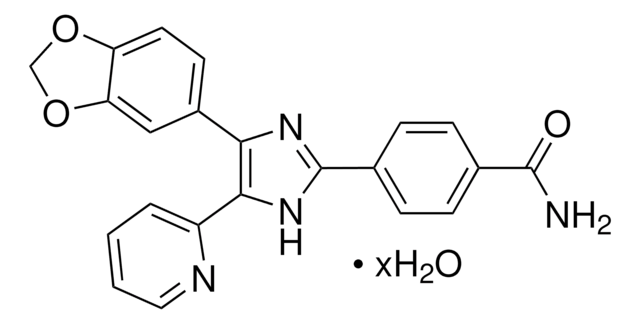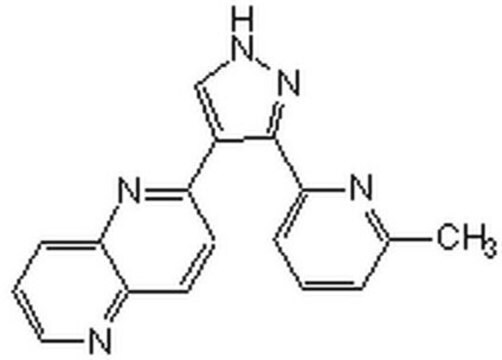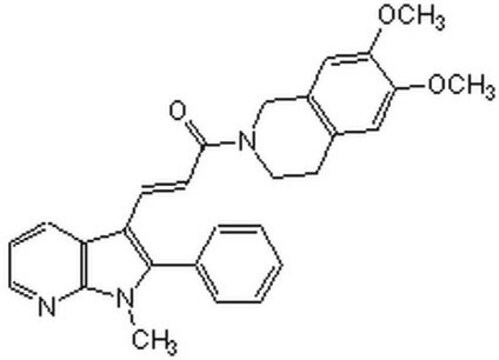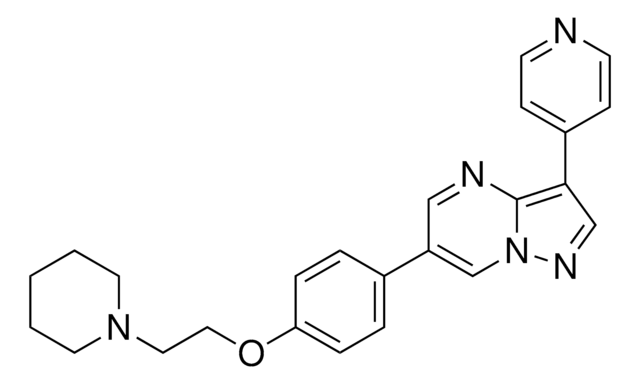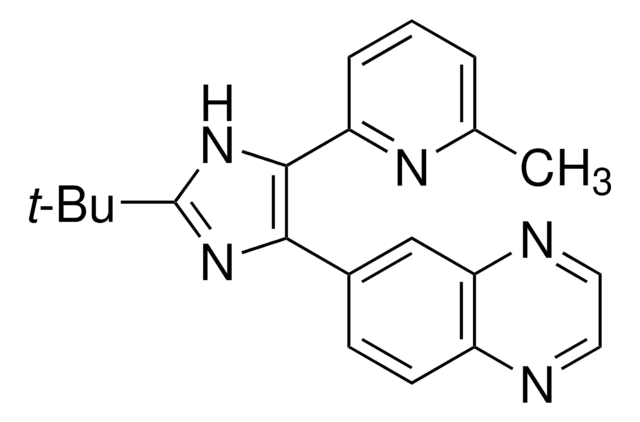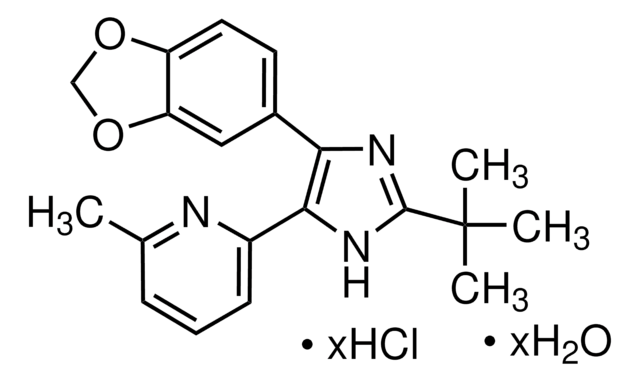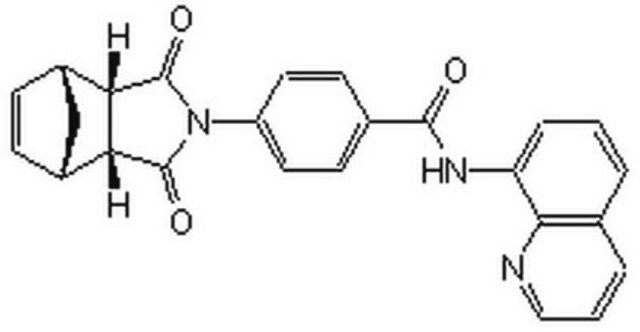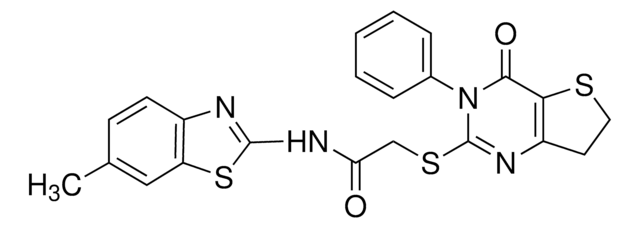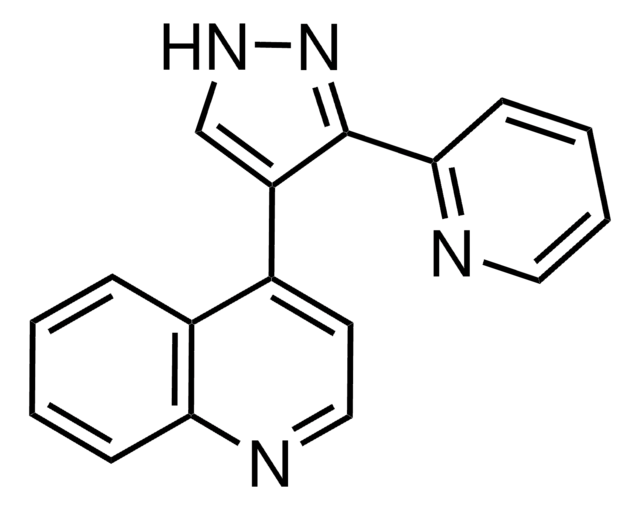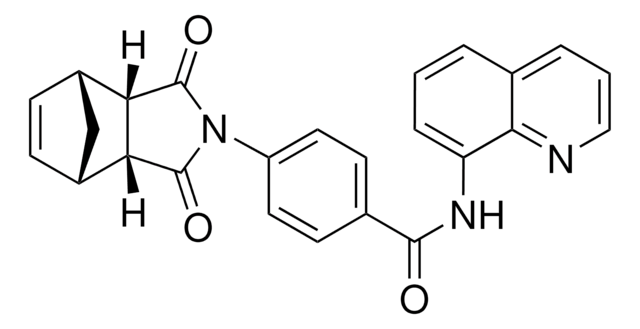616461
TGF-β RI Kinase Inhibitor VI, SB431542
TGF-β RI Kinase Inhibitor VI, SB431542, CAS 301836-41-9, is a cell-permeable inhibitor of SMAD2 phosphorylation. Inhibits the activity of ALK4 and ALK5 (IC₅₀ = 140 nM and 94 nM, respectively).
Synonim(y):
TGF-β RI Kinase Inhibitor VI, SB431542, 4-[4-(3,4-Methylenedioxyphenyl)-5-(2-pyridyl)-1H-imidazol-2-yl]benzamide, Dihydrate, 4-[4-(1,3-Benzodioxol-5-yl)-5-(2-pyridyl)-1H-imidazol-2-yl]benzamide, Dihydrate, SB-431542
About This Item
Polecane produkty
Poziom jakości
Próba
≥97% (HPLC)
Postać
solid
producent / nazwa handlowa
Calbiochem®
warunki przechowywania
OK to freeze
protect from light
kolor
off-white
rozpuszczalność
ethanol: 10 mg/mL
DMSO: 100 mg/mL
Warunki transportu
ambient
temp. przechowywania
2-8°C
InChI
1S/C22H16N4O3/c23-21(27)13-4-6-14(7-5-13)22-25-19(20(26-22)16-3-1-2-10-24-16)15-8-9-17-18(11-15)29-12-28-17/h1-11H,12H2,(H2,23,27)(H,25,26)
Klucz InChI
FHYUGAJXYORMHI-UHFFFAOYSA-N
Opis ogólny
Opakowanie
Ostrzeżenie
Informacje prawne
Kod klasy składowania
11 - Combustible Solids
Klasa zagrożenia wodnego (WGK)
WGK 3
Temperatura zapłonu (°F)
Not applicable
Temperatura zapłonu (°C)
Not applicable
Certyfikaty analizy (CoA)
Poszukaj Certyfikaty analizy (CoA), wpisując numer partii/serii produktów. Numery serii i partii można znaleźć na etykiecie produktu po słowach „seria” lub „partia”.
Masz już ten produkt?
Dokumenty związane z niedawno zakupionymi produktami zostały zamieszczone w Bibliotece dokumentów.
Klienci oglądali również te produkty
Nasz zespół naukowców ma doświadczenie we wszystkich obszarach badań, w tym w naukach przyrodniczych, materiałoznawstwie, syntezie chemicznej, chromatografii, analityce i wielu innych dziedzinach.
Skontaktuj się z zespołem ds. pomocy technicznej
